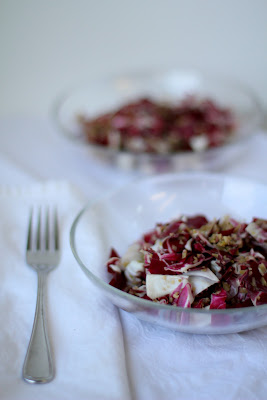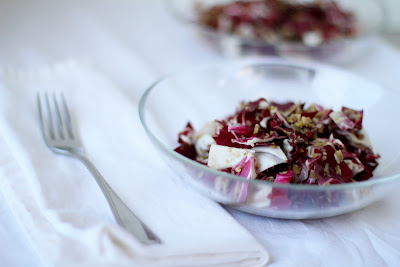Isn't it great how nature provides plentiful amounts of lemons just when most of us are in need of some bright, colorful tartness in our lives? I, personally, love lemony things in the chilly days of late winter and early spring, and one of my all-time favorite lemon applications is lemon meringue pie. I find that February's grey skies aren't so bad when some of this pie is in my world.
As I'm sure you gathered from the above paragraph, I love love love lemon meringue pie. I actually love any pie (except pecan), but this one is definitely in the top 3. It has the tasty, flaky crust, accompanied by a silken layer of tart lemonyness, all crowned with a fluffy, foamy meringue. I love to put a piece in my mouth and savor the way the little meringue bubbles pop all over my tongue, while the lemon curd and pie pastry make all of my other tastebuds explode. It's like you not only have the fireworks, you have the world-class symphony orchestra playing John Philip Sousa in the background.
I think that this is a great recipe for lemon meringue pie, and honestly, I've never felt the need to try another. Cook's Illustrated recipes tend to have science on their side, which is particularly helpful when you're dealing with potentially flavorless crust, melting lemon curd, and deflating meringue.
This recipe uses some special ingredients to keep the lemon in its place, and to prevent the meringue from melting in to a pool of separated egg whites. As long as you don't cut in to the pie before it's cooled (like I did, because I'm impatient), you'll have a perfect lemon meringue pie on your hands.
Lemon Meringue Pie
(Adapted a Teeny Bit from Cook's Illustrated)
Crust
- 1 1/4 cups all-purpose flour, plus more for rolling out the dough
- 1 tablespoon sugar
- 1 teaspoon salt
- 3 tablespoons vegetable shortening, cut into 1/2-inch pieces and chilled
- 4 tablespoons (1/2 stick) unsalted butter, cut into 1/4-inch pieces and chilled
- 4 to 6 tablespoons ice water
Filling
- 1 1/2 cups cold water
- 1 cup sugar
- 1/4 cup cornstarch
- 1/8 teaspoon salt
- 6 large egg yolks
- 1 tablespoon (packed) grated lemon zest (from about 3 large lemons)
- 1/2 cup fresh lemon juice (from about 3 large lemons)
- 2 tablespoons unsalted butter
Meringue
- 1/3 cup water
- 1 tablespoon cornstarch
- 4 large egg whites
- 1/2 teaspoon vanilla extract
- 1/2 cup sugar
- 1/4 teaspoon cream of tartar
Process the flour, sugar, and salt in a food processor until combined. Scatter the shortening over the top and continue to process until the mixture has the texture of coarse sand, about 5 seconds. Scatter the butter pieces over top and, using short pulses, process the mixture until it resembles coarse crumbs, about 5 pulses. Transfer to a large bowl.
Sprinkle 4 tablespoons ice water over the mixture. Stir and press the dough together using a stiff rubber spatula, until the dough sticks together. If the dough does not come together, stir in the remaining water, 1 tablespoon at a time, until it does. Try your best not to over-handle the dough. Form the dough into a 4-inch disk , wrap tightly in plastic wrap, and refrigerate at least 1 hour.
Let the chilled dough soften slightly at room temperature before rolling it into a 12-inch circle and fitting it into a pie plate. Trim, fold, and crimp the edges and freeze the unbaked pie crust until firm, about 30 minutes. Adjust the oven rack to the lower-middle position and heat the oven to 375 degrees. Line the chilled crust with aluminum foil and fill with pie weights (beans or rice work).
Bake until the pie dough looks dry and is light in color, 25 to 30 minutes. Remove the pie weights and foil and continue to bake until the crust is a deep golden brown, about 12 minutes longer. Set the pie on a wire rack to cool.
Adjust the oven rack to the middle position and heat the oven to 325 degrees.
For the filling: Combine the water, sugar, cornstarch, and salt in a large nonreactive saucepan over medium heat and bring to a simmer while whisking constantly. When the mixture starts to turn translucent, whisk in the egg yolks, 2 at a time. Whisk in the zest, then the lemon juice, and finally the butter.
Return the mixture to a full simmer, then remove the pan from the heat. Lay a sheet of plastic wrap flush to the surface of the filling to keep it hot while making the meringue.
For the meringue: Bring the water and cornstarch to a simmer in a small saucepan over medium-high heat, whisking frequently. When the mixture turns translucent and begins to bubble, remove it from the heat.
Whip the egg whites and vanilla in a large bowl with an electric mixer on low speed until frothy. Mix the sugar and cream of tartar together, then add it to the egg whites, 1 tablespoon at a time. Increase the speed to medium and whip the egg whites until soft peaks form.
Add the cooked cornstarch mixture to the whipped egg whites, 1 tablespoon at a time, and contunue to whip the egg whites until they are glossy and form stiff peaks. Remove the plastic wrap from the lemon filling and return to very low heat to rewarm, for about a minute.
Pour the hot filling into the baked, cooled pie crust. Dollop and spread the meringue over the top of the pie, making sure to adhere the meringue to the crust. Using the back of a spoon, make attractive peaks in the meringue.
Bake until the meringue is golden brown, about 20 minutes. Transfer the pie to a wire rack and cool to room temperature before serving.





































